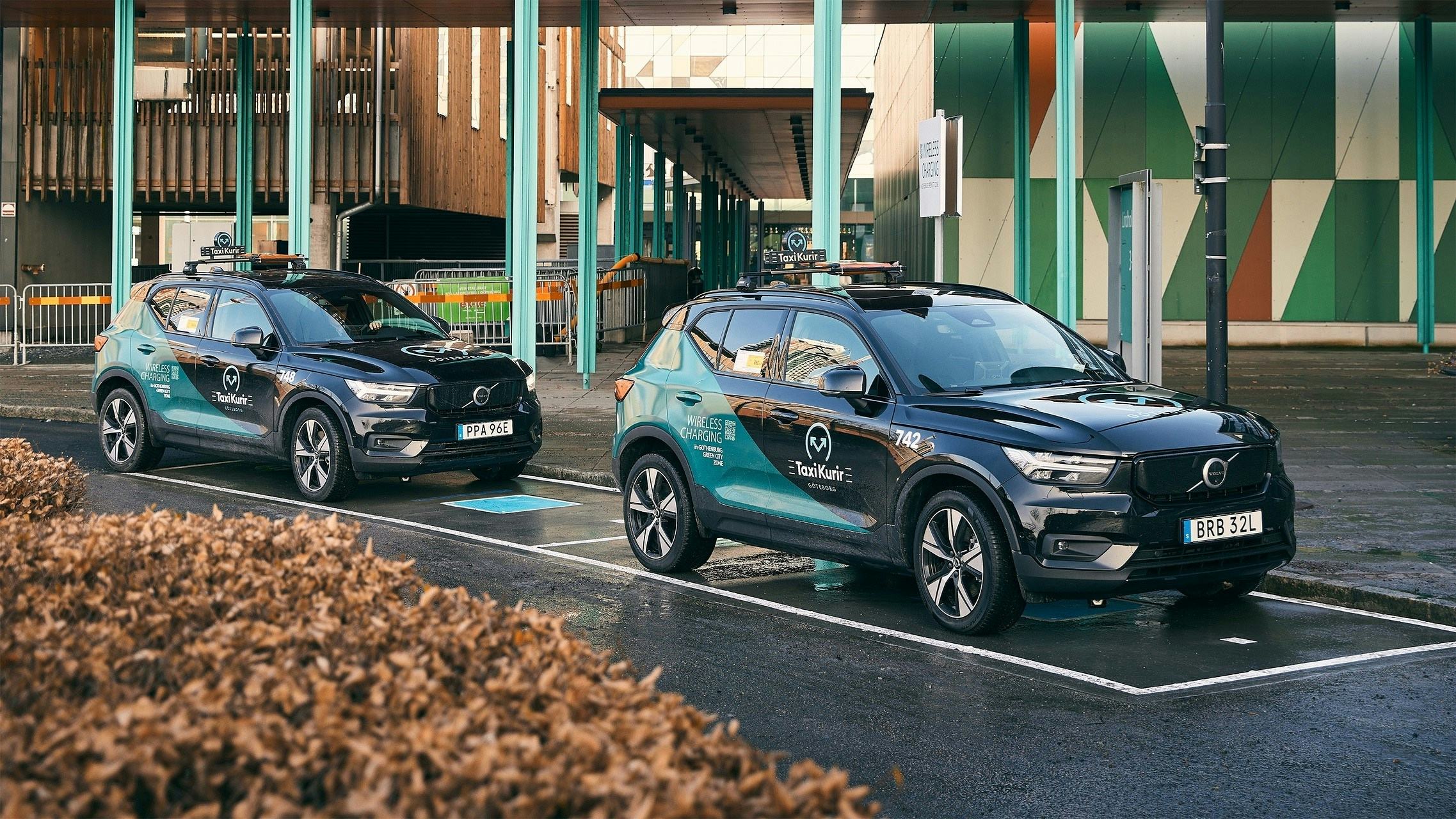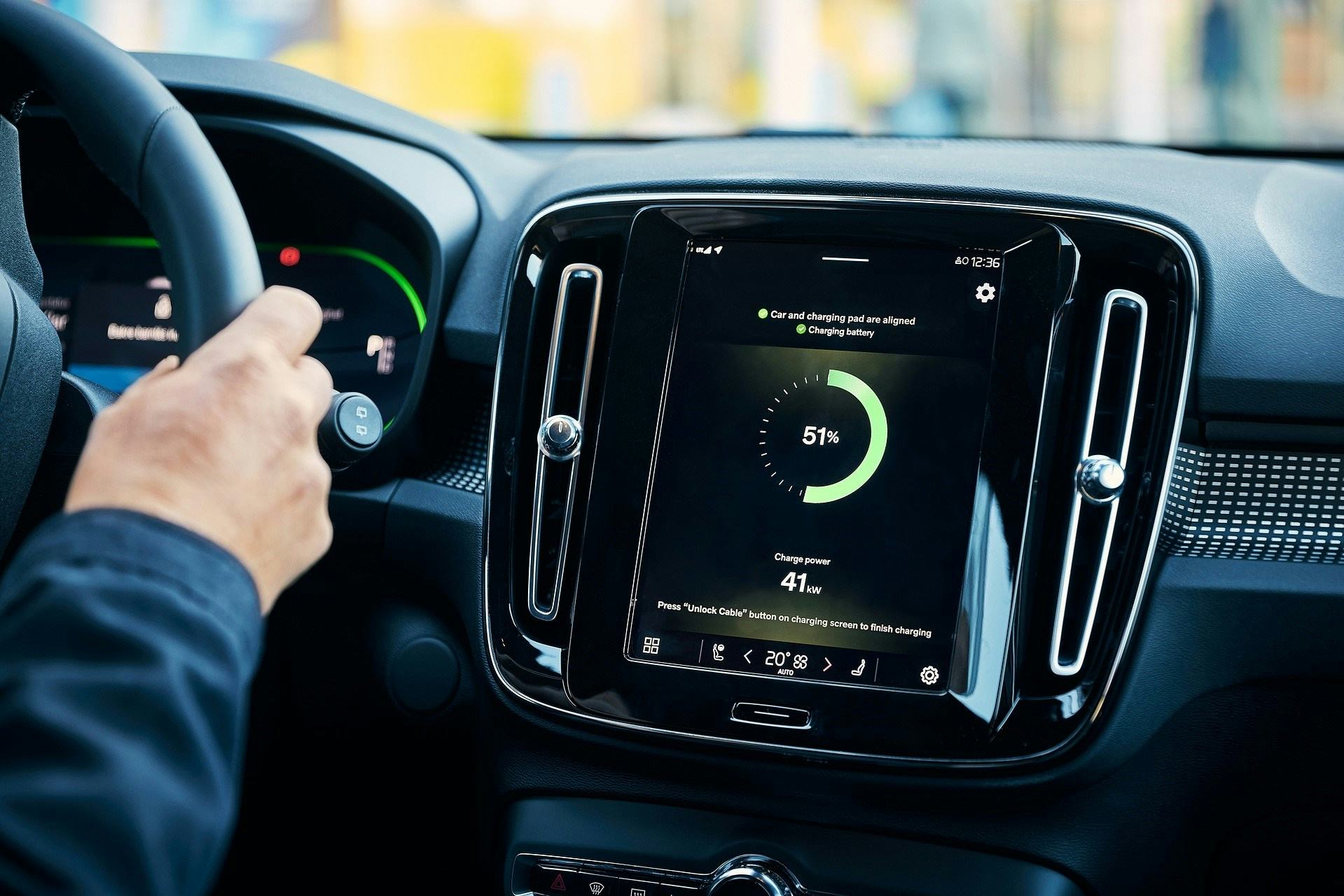
Every night, I walk over to my nightstand and drop my iPhone onto a wireless charging pad. The simple act of not plugging in is incredibly convenient, and I have another wireless charger built into my desk. These days, most new cars come with them, too.
The ability to charge my phone simply by plopping it down in the right spot has changed how I think about my phone’s charge status: I don’t.
Volvo wants to bring this mentality to electric cars and, to make it a reality, has partnered with the largest Nordic taxi operator to roll out a wireless charging pilot in its home city of Gothenburg, Sweden.
Charging pads from Momentum Dynamics — whose wireless tech was used in an Oslo taxi charging pilot a few years ago — have been installed in a number of taxi stands around Gothenburg. They’ll be used by specially equipped Volvo XC40 Recharge electric cars operated by Cabonline in a fully-operational taxi environment.
The cars will be used for more than 12 hours a day and total more than 60,000 miles of total travel each year across the three years of the pilot.
And this isn’t slow, dinky charging either. Effective wireless charging speed will top 40 kW, four times faster than a Level 2 residential charger can charge the XC40 Recharge and nearly as fast as the effective speed of a 50 kW DC fast charger.
“The taxi application is very good because you can charge while you wait for customers,” says Robert Eriksson, Senior Technical Leader with Volvo Cars, in an interview with Inverse. “You can test the technology, you can test the charging speed, and you can test what the cab drivers like about having this opportunity versus going to a charging station and hassling with cables.”

Inductive wireless charging isn’t new, but speeds equivalent to what you can get out of a wired DC fast charger are (newer stations are often capable of far higher maximum charging rates, but 50 kW chargers abound, especially in Europe). And much quicker speeds should be possible.
Eriksson says they’ve seen greater than 90 percent efficiency, which is close to what is achieved with onboard AC charging. And, he points out, if these wireless chargers save a cab driver from needing to drive a few extra miles out of the way, any efficiency losses are quickly erased.
BMW rolled out a consumer inductive charging pilot with 200 cars in California a few years ago. The technology certainly works, but it hasn’t caught on as an alternative to physically plugging an EV in.
Volvo retrofit Momentum Dynamics chargers to its XC40 Recharge cars, and, since the system is only an inch thick, it could eventually come as a factory option. The current tech should support speeds of up to 75 kW, but a more advanced 800-volt battery infrastructure would allow for faster wireless charging speeds just like it allows for faster wired charging.
Drivers need to get within three inches of the charging pad target, but they’re helped by a screen in the car that says if they need to move forward or back to get maximum speeds. An auto-parking feature already in many Volvos could handle the precision parking automatically in future implementations. Looking even further ahead, imagine your car dropping you off at a restaurant and then autonomously wandering off to the nearest wireless charger to juice up for the ride home.
Inductive charging does add cost, both for the equipment on the vehicle itself as well as the charging infrastructure. The need for precision parking is an added difficulty, too, and consumers are unlikely to enjoy reparking their car if they’re off the target point by half a foot.
For those reasons, it’s likely that targeted commercial applications, like this taxicab pilot, are a better use case than residential inductive charging systems.

A hidden benefit — literally — of the wireless charger is that cities won’t need to install unsightly charging stations everywhere to keep their taxis on the move. The actual fast charging equipment could be 100 feet away from the charging spots, making for a much cleaner visual environment in addition to a cleaner physical environment.
The wireless pads automatically identify the vehicle being charged and bill the taxi company accordingly. They could eventually be installed in airport taxi lines or downtown areas, with taxi drivers staying warm inside their cars (necessary in Sweden) and not needing to mess with charging cables at all.
“The taxi companies may want to be even better than the car companies when it comes to electrification,” Eriksson says. “The customer would like to have it, and they see benefits on energy prices, so the business side is beneficial too.”
Wireless charging could prove to be popular for other forms of public transit, too. The tech has been trialed with a number of electric bus routes, which makes sense as buses can be charged at stations on their normal route. That’s a much better charging solution than needing to plug a bus in at a station or taking it out of service entirely.
Sign up for Jordan Golson’s entertaining (and free!) car reviews newsletter to learn about all the new cars on the market.







